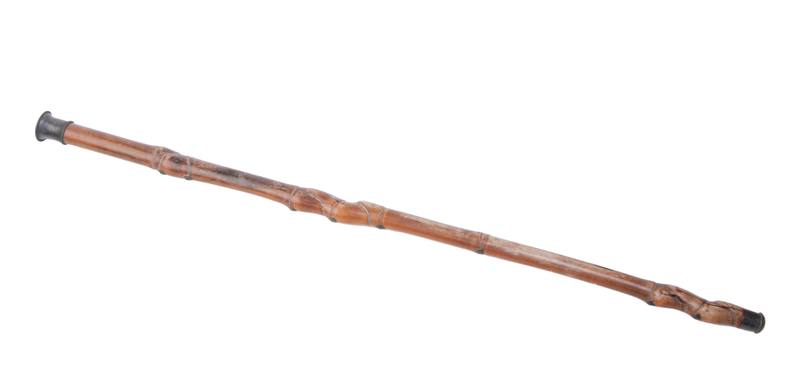Here are just a few uses for a staff. It may seem like a basic, simple object, but boy is it both versatile and practical!
Use as a Walking Stick
A primary use of a staff is as a walking stick. My first mentor in the world of wild edibles and survival skills, Taterbug Tyler, used to walk with a garden hoe that had been cut down to just a small triangle left of the blade. He claimed that he once saved himself from falling over a ledge by grabbing onto a tree root with the hoe. Mostly he used it as a walking stick in the rugged territory we hiked through looking for Ginseng (Panax quinquefolius). The blade came in handy for unearthing roots and flipping over rocks. It is a good tool and could be reproduced with the natural form of a hardwood staff.Another use for a staff as a walking stick is for crossing streams. In certain territory you might have many streams weaving around, or you might need to repeatedly cross a stream that you are traveling along. Even if you find logs and rocks to help you cross, a staff can help you maintain balance. Without rocks to cross on a staff can be used like a pole vault to help you jump across what you otherwise could not. For these reasons, it is useful to carry a staff.
As a Weapon
I am fascinated with the bo staff and like to go with just over six feet as a standard cutting length. Particularly when Hickory (Carya spp.) or some other hard wood is found, it is an ideal size for a weapon as well as to begin making a bow or spear. When cutting the trees down and into length, look for nice straight six-foot sections. It is generally good to cut the trees where they bend in order to preserve straight sections and removed the crooks.The staff has been a most basic striking implement since ancient times. Needing to use a weapon against wildlife is an unlikely scenario, but not impossible. Certainly, it could make you feel better to have some protection in hand. There has been more than once when the sound of coyotes or something unknown has prompted me to pick up a stick. Better yet is the feeling of knowing how to use it. Most people should be able to wield a staff should an emergency arise and be able to perform basic strikes to protect themselves. With training, the staff becomes an increasingly useful weapon, with several distinct benefits: there are reasons otherwise to keep it at hand, it is superb blocking instrument, any part can be used as the handle, and it can be used for a variety of strikes to virtually any part of the body. It can be swung with great momentum. It can strike low or high, as well as both in relatively rapid succession, and one can thrust with the end of the staff with the potential for damaging penetration. For these reasons, the staff is a primary weapon of many styles of martial art.
Kobudo – the martial art of the Okinawan weapons (which is often integrated with Karate), Shaolin Kung Fu, Wing Chun Kung Fu, Ninjitsu and many others have their study of the staff. Learning the forms, or kata, of these arts is a way to learn special combat moves. Becoming proficient with these moves not only makes the weapon more effective, but provides a healthful exercise that improves balance, coordination, circulation, immunity, and awareness, all of which are important in a survival situation. Plus, study of the forms could provide a pastime during life in the wilderness.
Have you ever used a staff? Would you ever use it? Share your thoughts in the comment section below. As for us, we're not heading into the wild without a staff from now on!
Article Source: Survival Cache
